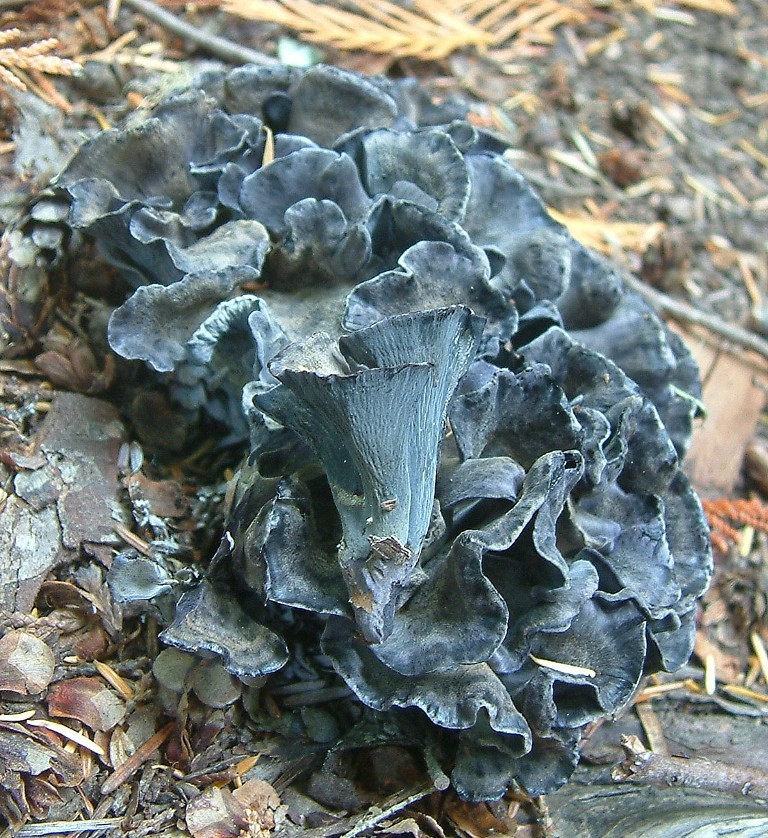Polyozellus
Scientific name: Polyozellus
Polyozellus
Scientific name: Polyozellus
 Photo By igorm (igor) , used under CC-BY-SA-3.0 /Cropped and compressed from original
Photo By igorm (igor) , used under CC-BY-SA-3.0 /Cropped and compressed from original Description
Polyozellus often grow in clusters and are known for their intriguing, irregularly shaped caps and dark blue to black coloration. They typically thrive in coniferous forest habitats, forming symbiotic relationships with tree roots through a process called mycorrhiza. Some species within this group are of particular interest due to their bioactive compounds, which have been studied for potential health benefits. This group’s distinct appearance makes it a fascinating subject for both mycologists and nature enthusiasts.
Species of Polyozellus
Scientific Classification
Phylum
Club fungi Class
Mushroom-forming fungi Order
Thelephorales Family
Leathery earthfans Genus
Polyozellus